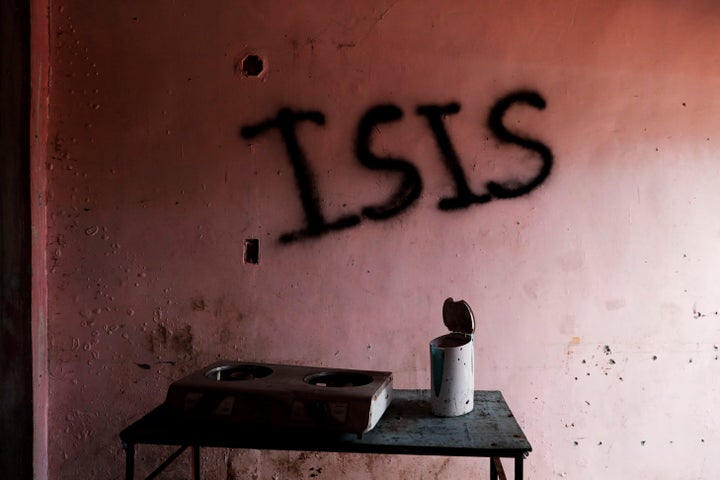President Donald Trump and U.S. officials have described the killing of ISIS leader Abu Bakr al-Baghdadi as a devastating blow to the group and part of its total defeat. But the history of terrorism shows that the demise of extremist groups is rarely that simple.
Counterterrorism is not a chess game that ends when you topple the king. When the leaders of terror groups are captured or killed, it can have a range of effects depending on what extremists believe, how much support they have and how they’re organised. Sometimes terror groups collapse after their leader is gone. But others are resilient and may even increase their attacks.
In the case of the self-described Islamic State, studies suggest the group may persist and regroup without its most successful leader. ISIS has already been able to adapt even as it has drastically declined since its height in 2014, continuing to carry out terror attacks and moving toward guerrilla tactics.
“ISIS is actually like the perfect model for building resilience,” said Jenna Jordan, an associate professor at Georgia Tech who recently released a book on what happens when terrorist leaders are killed or captured.
There are three key factors in determining what will happen to a terror group after its leader is removed, according to Jordan’s research, which analysed over 1,000 examples going back to the early 1970s. These are:
1. The group’s level of popular support.
2. Whether its ideology is built to outlast its leader.
3. If the group has a strong bureaucracy and set of institutions to keep things functioning.
When terrorist groups have collapsed after losing a leader, it’s often been because they scored poorly in those categories. The Japanese doomsday cult Aum Shinrikyo once had tens of thousands of members in multiple countries, for instance, but fell apart after the arrest of its leader Shoko Asahara in 1995, in part because he was so central to the organisation’s beliefs. The Maoist Peruvian group Shining Path declined following the capture of Abimael Guzman in 1992 as it lost popular support and a charismatic leader.

Meanwhile, other groups such as al Qaeda have gone through changes in leadership and remained an international threat. These often tend to be religious in nature or have another ideology that puts less emphasis solely on the person at the top. Highly bureaucratic groups ― such as ISIS, with its complex internal organisations and structures ― also find ways to recover from losses. The most resilient, Jordan found, are usually hybrid organisations that are a mix of tightly controlled bureaucracies with more autonomy among rank-and-file followers.
“Organisations that are very centralised at the upper levels and then decentralised at their lower operational levels are very difficult to destabilise,” Jordan said.
Although other studies have argued killing terrorist leaders is somewhat more effective at ending terror groups than Jordan’s studies have found, the common consensus is that killing or capturing a leader isn’t an end-all solution for terrorism.
Predicting exactly what will happen when a terrorist leader dies is also difficult in general, since it often takes place during a wider offensive against the group. The international coalition against ISIS didn’t solely aim to kill Baghdadi, but also to disrupt its internal operations such as its media output and financing. Along with Baghdadi, essentially all of ISIS’s senior leadership was killed in recent years ― making an efficient succession a challenge even with its bureaucratic structure.
Baghdadi was also a unique leader whose doctorate in Quranic studies and claims of being able to trace his ancestry back to the Prophet Muhammad’s family were a huge part of the group’s propaganda and a source of his legitimacy within ISIS. But Baghdadi himself was not ISIS’s only leader, and the group reportedly had plans for his eventual death in place for years.
Rather than destroying ISIS, Baghdadi’s death may accelerate the changes that have affected the group since it began to suffer heavy losses after 2014. It has been shifting away from its goal of establishing a state and toward an underground insurgency, empowering its franchises outside of Iraq and Syria to be largely independent, and long encouraging supporters to take attacks into their own hands. The official ISIS propaganda channels have so far been silent about Baghdadi’s death, but at least some supporters have already proclaimed that the group will go on.
“It isn’t this statelike entity governing a vast amount of territory,” Jordan said. “But it’s still a super active, dangerous insurgency.”
